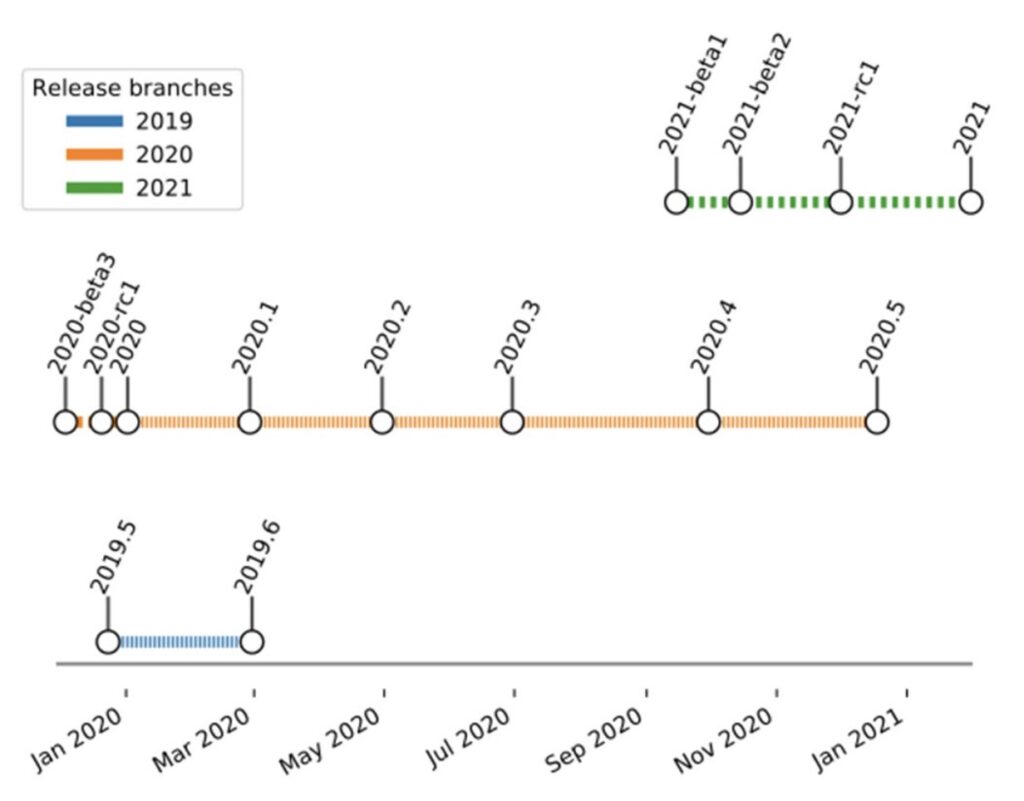The GROMACS team has made available a preview of version 2021. Most new features and performance are finalized, and the team would like users to try things out and help find any rough edges. You can see the announcement with download links at https://gromacs.bioexcel.eu/t/first-gromacs-2021-beta-release-available/986. Please post there if you have feedback, good or bad!

Since 2018, led by BioExcel (https://bioexcel.eu/), the GROMACS team makes an annual release in January each year. The version number is based on the year, so that users always know how up-to-date their version is. Earlier this year, there was the 2020 release, and then subsequent patch releases such as 2020.1 and 2020.2 every few months to fix issues identified in the meantime. Those are made from a highly stable “release” branch. Major changes such as new features go on a different branch of the code aimed at version 2021. That means that users can more confidently judge that it is safe to upgrade from 2020.x to more recent 2020.x patch versions to access bug fixes, without additional extensive testing on their part. You can see the timelines of the active branches below:
This year's new feature work is now complete, and a preliminary release has been made, called 2021-beta1. It's not yet ready for production scientific use, but is available for people to try out, and perhaps given feedback to get any issues fixed sooner rather than later. Perhaps preliminary benchmarks based on the beta will be suitable for project planning or applications, etc. Meanwhile the core GROMACS team will build and test on a wide range of simulations, compilers, libraries and hardware to find any issues that weren't found during development. ENCCS has contributed code review and testing in the short period it has been active. Stay tuned for bigger things next year!
For more information about GROMACS visit http://www.gromacs.org.
RECENT NEWS
[post_grid id='651']







